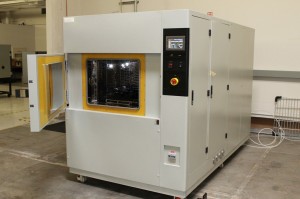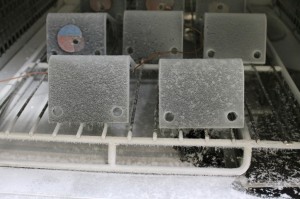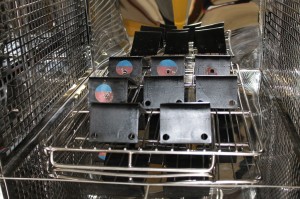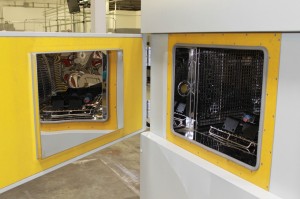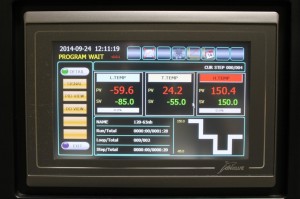What is Thermal Shock testing?
Thermal Shock Test using Liquid-to-Liquid or Air-to-Air Method
Using a Two-Chamber design, this method is used to determine the physical endurance of components and systems to sudden changes in temperature.
Why Thermal Shock?
Thermal cycle and thermal shock using real life chambers are overlapping tests. But if we assume ideal cases then conceptually thermal cycle is an endurance test whereas thermal shock is a strength test.
Temperature and temperature cycling exposures are straightforward: During extreme temperature soaking and thermal cycling, micro dislocations propagate and fatigues accelerate leading to shortened lifetime failures.
In contrast, during thermal shock, materials and structural robustness are verified by applying on varying spatial directions maximal temperature gradients which, after netting out with thermal conductivities, induce internal differential temperatures which cause differential thermal-expansion strains which map through the Young’s moduli to cause stresses which wrestle with the max stresses, tensile and compressive, that the component materials and their bonding interfaces and bulk hybrid structures can sustain in directions of the highest temperature gradients and also cross-induced through Poisson’s ratios to sustainable stresses in transverse directions.
Except for procedural customers such as the DOD, practically we could eliminate the temperature cycling test if we just hold the soak times at the end temperatures in the thermal shock test longer.
Alternatively we could eliminate the thermal shock test if we use a temperature chamber that can change temperature quickly enough such as one using liquid CO2 for cooling and high-wattage heat filaments, and arrange the internals to let liquid CO2 droplets and heated air be blown on the IC packages under test first before reaching the chamber’s temp sensor.
References:
JEDEC Standard JESD22-A104-C
Mil-Std-883G, 1010.8 (A, B, C, F)



